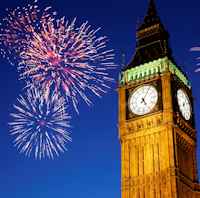
The trial gave English non-Catholics a lasting sense that being English would never go together with being Catholic
Dr. Harald E. Braun is a Senior Lecturer in European History (1300-1700) in the University’s Department of History.
“Remember, remember, the fifth of November…….
Every year on 5 November, we remember and celebrate that on that date in 1605, King James and his parliament were saved from political assassination by a group of terrorists.
We celebrate Englishness. We also celebrate intolerance, the persecution of a religious minority, and political extremism on the part of English government.
During the trial following the arrest of the perpetrators, the prosecuting counsel assured the jury that the deviousness and depravity of the unsuccessful plotters – today, we might refer to them as Catholic political activists or Catholic terrorists – was rooted in their faith.
Beyond the trial
The trial and government propaganda gave the majority of English non-Catholics a lasting sense that being English would never go together with being Catholic, and that King and country remained in mortal danger from future conspiracies.
In their righteousness and extremism, prosecution and government were matched by the conspirators. King James I had sorely disappointed the hopes of English Catholics – neither abolishing the penal laws that Elizabeth I and her parliamentarians had aimed against Catholics, nor even curbing the zeal with which they were enforced.
Loyalty ignored
The quiet loyalty to the crown practised by the vast majority of English Catholics was simply ignored. Against this background, Catesby, Fawkes and their fellow conspirators persuaded themselves that they were left with no option but political assassination and mass murder, and that they acted on behalf of their community.
While the plotters were put to gruesome deaths, they are hardly the victims in this sorry tale. Fawkes had served in the Spanish army, and the plotters had repeatedly sought Spanish support for their plans.
This was deemed sufficient evidence to claim that England and the monarchy had been the target of a papist and continental conspiracy and that all English Catholics had to be regarded as fifth columnists.The fact that the Spanish crown had refused to support the plot did not matter.
Generations of prejudice
The voices of the many Catholics in England who still wanted nothing else for themselves and their children but to live quietly and obey the law, already ignored by the plotters, were drowned out by the noise of the government propaganda machine.
Repression and prejudice would blight the lives of English Catholics for generations. Only in 2001, parliament decided that the monarch could marry a Catholic and still keep the throne.
When suspicion erodes trust and when being a member of a faith community triggers suspicion and counts as an act of disloyalty or terrorism in itself, only the extremists and political gamblers thrive on either side. Everyone else loses.”

Many thanks, Andy – glad you liked it. The consensus among historians today is that there was a conspiracy. At the same time, the theory that the plot was invented by courtiers eager to instigate more strident anti-Catholic legislation does reflect the suffering and lasting sense of injustice among English Catholics. Both the plotters and, in the wake of the plot, the government regarded the English Catholic minority as a “fifth column”. Neither had any good reason to do so, as the vast majority of English Catholics was and remained loyal to the crown. English Catholics, at the time and later on, felt that they did not deserve to be considered “lesser” and less reliable subjects to the crown. The outlandish hopes of the plotters – Catholics rising in the midlands, replacing James I / VI with a Catholic ruler – fanned suspicions that the whole plot was so unrealistic that it had to be a government conspiracy.
Today, we could look at both the conspiracy theory and Bonfire Night as the result of a knee-jerk and emotive political response to the actions of a small minority within a minority.
Excellent piece, thanks Harald. When I was a schoolboy in the late 80s, I was presented, in both a school History lesson, and in a popular historical children’s magazine, with a long list of evidence that the gunpowder plot never in fact existed. The implication, explicitly delivered, was that the entire story was a fabrication by elements of the government to generate hostility towards the Catholics. Has this “double conspiracy theory” now been thoroughly debunked?